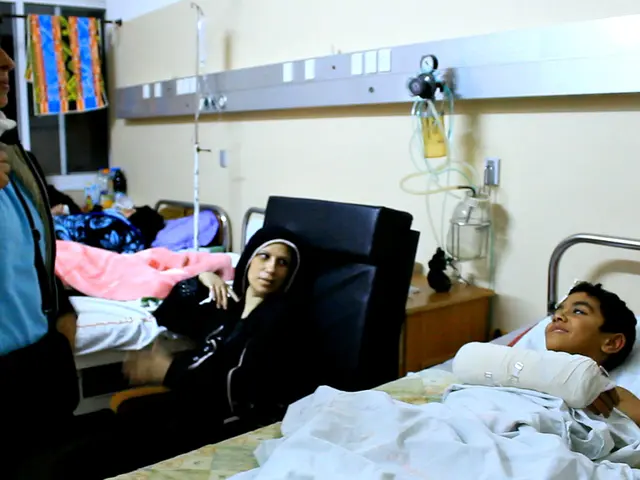Empathizing with Kids' Anxiety: A Comprehensive Guide
Dealing with anxiety is a common part of childhood, but persistent feelings of anxiousness can signal an anxiety disorder. With the right support, children can learn to manage their feelings and live their lives to the fullest. According to American Family Physician, around one in twelve kids and one in four adolescents experience anxiety disorders.
As caregivers, it's essential to be aware of the signs of an anxiety disorder and seek professional help when needed. However, it's also crucial to help children develop strategies to cope with anxiety on a day-to-day basis.
Coping with Anxiety
The goal isn't necessarily to eliminate the sources of anxiety, but to teach children how to manage their feelings and function well even when anxious. Over time, their anxiety may decrease. Here are some techniques to help children cope with anxiety:
Grounding Techniques
Grounding techniques bring a child's focus back to the present moment, helping them avoid getting caught up in their anxious thoughts. One popular grounding technique is the 5-4-3-2-1 method. In this method, children focus on their five senses:
- Five things they can see
- Four things they can feel
- Three things they can hear
- Two things they can smell
- One thing they can taste
Breathing Techniques
Breathing techniques can help children relax and reduce their anxiety levels. One simple breathing technique involves tracing each finger slowly with the other hand while focusing on breathing in and out. Encourage them to breathe out for one or two counts longer than they breathe in to promote relaxation.
Activities
Encourage children to engage in activities that they enjoy and that help distract them from their anxious feelings. This could include drawing, painting, running, listening to music, watching a movie, or reading a book.
Calm Reassurance
A child's presence and reassurance from a trusted adult can help alleviate their anxious feelings. They may want a caregiver to sit with them, hold their hand, or simply be nearby. This can help children feel reassured and soothed, knowing that their anxiety will pass.
Avoiding Anxiety
It may be tempting to help a child avoid the things that trigger their anxiety, but this can actually reinforce their fear in the long term. Instead, encourage children to learn alternative coping mechanisms, such as deep breathing and grounding techniques. This can help them manage their anxiety without resorting to avoidance.
Validating Feelings
It's important to validate a child's feelings of anxiety, but it's not always necessary to agree with them. For example, if a child is afraid of going to the doctor, reassuring them that they can face their fears and that they are brave can be a more effective approach than agreeing with their fear.
When to Seek Professional Help
If a child's anxiety persists and begins to impact their daily life, seeking professional help may be necessary. Signs of an anxiety disorder may include excessive worry, heart palpitations, nausea, and avoidance of certain situations.
Resources
For more information and resources on anxiety, visit our dedicated hub.
In summary, several techniques can help children manage anxiety, including deep breathing, grounding, activities, and reassurance. While it's important to validate a child's feelings, avoidance should be discouraged. If a child's anxiety persists and begins to impact their daily life, seeking professional help may be necessary.
Enrichment Data:
Recent research indicates that grounding and breathing techniques are highly effective in alleviating anxiety symptoms in children. Grounding techniques help shift a child's focus from overwhelming thoughts to the present moment, providing a sense of stability and control. Deep breathing techniques activate the parasympathetic nervous system, promoting relaxation and reducing stress. Combining deep breathing with grounding techniques can further increase their effectiveness. Consistent practice of these techniques can equip children with lifelong skills for better emotional health and improved concentration.
As a mental health caregiver, understanding the nuances of child and adolescent mental health, such as anxiety disorders, is crucial. Regular physical health check-ups should include mental health assessments for children and adolescents to ensure their overall well-being.
To further support children's mental health, incorporating grounding and breathing techniques, as mentioned in the dedicated resource, into daily routines can significantly improve their ability to manage anxiety and promote better emotional health.








